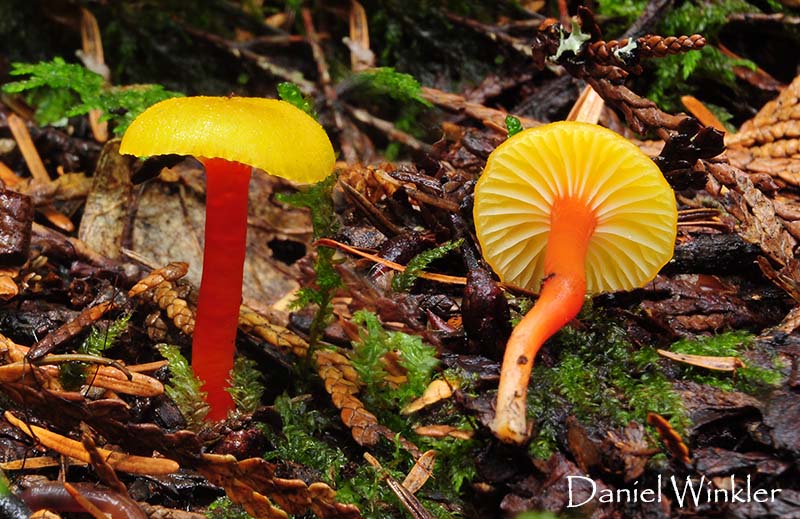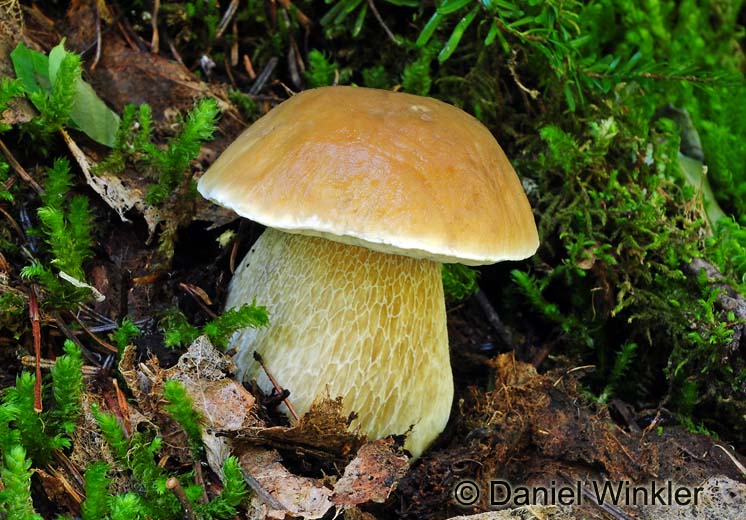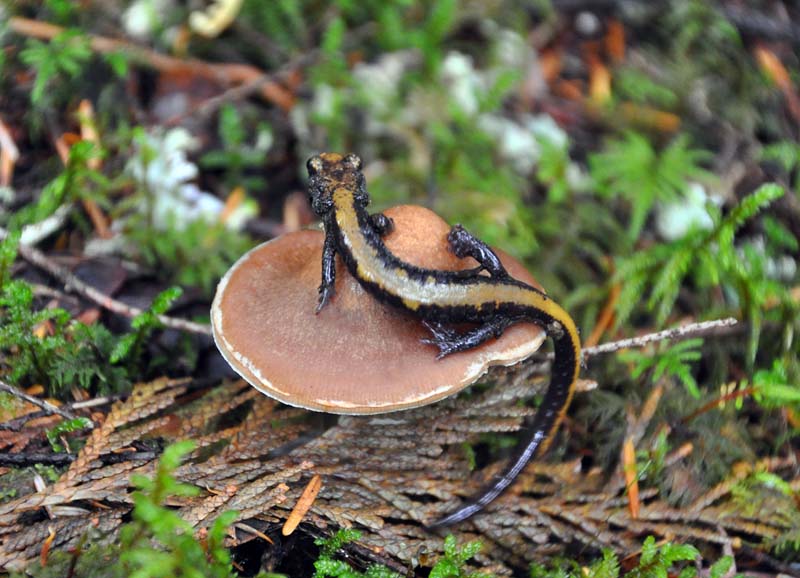What a great September for mushrooms. All kinds of mushrooms from porcinis to puffballs are popping up everywhere in the Pacific Northwest!
Record rainfall spaced out over the month of September after a mid August shower soak the soils that have been deprived of good fall rains for several years now. 2012 was one of the worse fall seasons for decades. But that is the past.....
Best color-coding of the season....

What a rare beauty we encountered in at Yard Creek in Sicamous. It keyed out to Hygrocybe parvula.
Now, let me introduce The King

I am always torn to pick such a beauty. It will lose its perfection when tossed around in my basket, but they taste so good!

An hour of picking on the way to Yakima, when I gave a talk for Yakima Valley Mushroom Society, netted a nice basket of porcini. Processing always is much more arduous than picking.

My wife Heidi with the cleaned bounty of our first bolete haul September 6. The red cap in the left is a Boletus smithii, see below.

And then finally I was able to take great shots of perfect Cantharellus roseocanus, the Rainbow chanterelle.
In the Pacific Northwest Cantharellus roseocanus is usually associated with spruce, be it Picea sitchensis on the coast or Picea engelmannii in the mountains. Due to its ectomycorrhizal association with spruce it is much rarer than the Golden and the White chanterelle in the Pacific Northwest. Commercial picking is rarely aimed at the Rainbow chanterelle. Cascades Mountains, WA, 9-11-2013

On the left young Golden Chanterelles and on the right young Rainbow Chanterelles.
Both Chanterelles have a strong fruity, apricot like smell and the after-taste of their raw flesh is spicy. The spiciness gave rise to the German name Pfifferling, meaning Pepper mushroom, but it takes quite awhile to develop that in your mouth. Many people might miss this characteristic, but slugs and bugs might stay away from Cantharellus due to that chemical defense. Aroma and taste of to these two Chanterelles is quite similar, but the Rainbow chanterelle's aroma and taste seem a bit more intense when raw. However, after cooking I could not tell any difference in taste.

Perfect Golden Chanterelles (Cantharellus formosus)

So many delicious mushrooms! It is hard to catch up in cooking and preservation. For the first time Heidi and I marinated Golden chanterelles inspired by our friend Animal. I do not like to dry Chanterelles. I am afraid they turn bitter and for rehydration one better takes a day. I usualy cook Chanties and then freeze them.

Up in the mountains Boletus smithii is quite common. The reddish hue of its cap and the red marking on the upper stem whose base is yellow are tell-tales.
It is edible, but does not compare well to a king bolete.

A Scaberstalk (Leccinum sp.) growing amongst conifers in Sicamous BC. I have a hard time identifying these brown cap conifer-associated Leccinums.
I have enjoyed eating them several times, including this specimen.

A very young Cortinarius violaceus. It actually is edible, but I have eaten it only once. It turns black when being cooked and does not have an enticing taste. Much better to enjoy its beauty.

An Amanita gemmata is standing very all alone in the forest.

An Amanita porphyria, Gray-veiled or booted Amanita growing in Sicamous BC. Pretty surely a poisonous Amanita.

Lichen magic of the Northwestern rain forest, Lobaria pulmonaria, Lungwort, a good indicator for air quality. It can not thrive in polluted air.

How often do you run into true Newtstools?
Check out my "Field Guide to Edible Mushrooms of the Pacific Northwest" in my "guides & goodies page"
